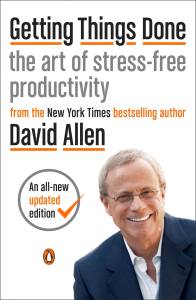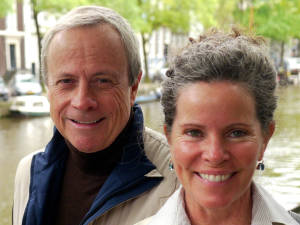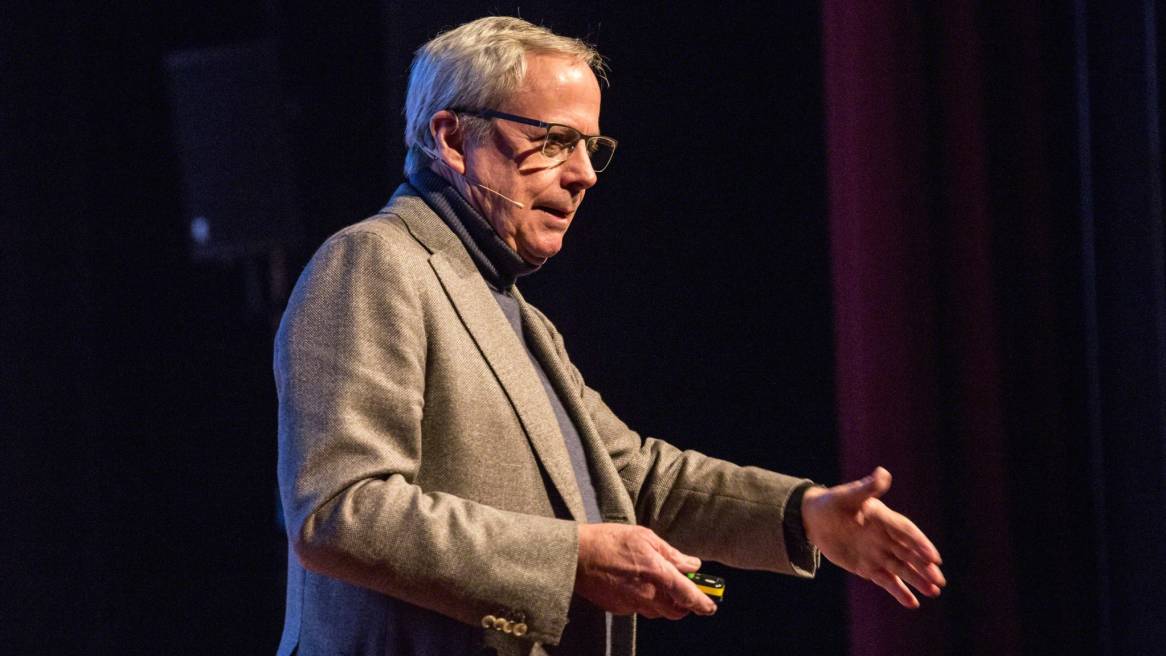Ready to Get Things Done?
How conquering that to-do list frees you to focus on more creative, meaningful work
Ah, the never-ending to-do list—we all have one. And, whether that list of must-do’s is jotted on a piece of paper or doing backflips in your brain, it can be tempting to ignore the entire thing and take yourself out for ice cream.
But, what if there was a way to train your brain to proactively take on that list instead of avoiding it? 360 sat down with David Allen, author of “Getting Things Done: The Art of Stress-Free Productivity,” to discuss his best-selling GTD methodology, tips for conquering every task, and why the brain is a terrible filing cabinet.
360: When I think about the person who wrote a book called, “Getting Things Done,” I think about somebody in a suit and tie working 24/7, but you’ve described yourself as the laziest person you’ve ever met. So, who are you?
David Allen: Let me start with who I’m not—that type-A, driven, aspirational, entrepreneurial, 24/7 kind of guy. Sure, there’ve been periods of my life where I spent a lot of time working, but in truth, my personal style happens to be intuitive and spontaneous, doing only what I need to do to manage my lifestyle. I came up with this whole methodology so I could keep that spontaneity, clarity and freedom as my life got more complex.
360: How do you explain “Getting Things Done” to people?
DA: It’s about getting control of your commitments so you can focus on more meaningful things. There are very specific techniques you need to apply. And, everybody already knows how to do these techniques, they just don’t do them or don’t do them consistently.
360: If someone is feeling overwhelmed, what should they do first?
DA: First thing we do is get a big stack of paper, a pen and an empty basket or tray. And then I’d ask, “What’s got your attention?” and, one by one, as soon as it pops into your head, you’d write it down on a piece of paper and throw in your in basket.
360: No matter how big or small, it goes in the basket?
DA: Yes. One of the key things I uncovered after all these years is your head is an absolutely crappy office. So the first thing we do is get what’s on your mind, off your mind.
Most people have hundreds of things on their mind and aren’t even conscious of all of them until they sit down and do this process. It takes most mid- to senior-level professional people one to six hours just to capture that.
But if you only did that, then you might become a compulsive list maker with a pile of stuff you know you need to do. So, we move to step two. Let’s take each one of those things you wrote down and go through a clarification process. What is this thing that has my attention and is it something I’m committed to move on?
If you’re not, that item might go in the trash or be something to incubate. If you’re committed to move on this item, then you have to ask yourself what’s the very next action you’d need to take and what’s the final outcome you have to keep track of until it’s done?

360: What advice do you have for someone who feels overwhelmed around the clock?
DA: Do you have a pen and paper by your bed? If you do, you’ll sleep better. When you jot things down, you’re able to get them out of your head and your brain will be free to rest.
360: Can you tell us about your Two-Minute Rule?
DA: Anything you can finish in two minutes, just do it, right then and there. Don’t wait.
360: The World Health Organization recently recognized burnout at work as an official syndrome. How can GTD help people prevent burnout?
DA: If you make more agreements than you’re willing to keep with yourself, you’re going to burn out. You have to get control of all of the things you’ve committed to and then negotiate, with yourself or other people, about what you can and cannot do.
Most people have 30 to 100 projects and 150 to 200 next actions and they can’t do any of those at the same time.
360: What connections do you see between the workplace and productivity?
DA: The environment you’re in helps trigger behaviors that work for you. It doesn’t define the productivity activity, but it certainly can support it. For example, I don’t do creative writing at my desk, I do creative writing with my laptop on my lap in a reclining chair in my living room.
Once you know what you need to do, then you have to find the appropriate tools and the appropriate environment to be able to do it optimally. I spend a good bit of energy making sure where I sit when I do my work is comfortable, fun and aesthetically pleasing to me, to be able to do it easily and efficiently.
360: What’s the one defining message you want to share about “Getting Things Done”?
DA: Your head’s for having ideas, not for holding them. The power of GTD isn’t in the lists and action items, it’s in the freedom and creativity you’re capable of once those things aren’t taking up space in your head.

David Allen lives in Amsterdam and has more than 35 years of consulting, training and coaching experience. He created the GTDⓇ methodology and is the author of five books, including the best-selling, “Getting Things Done: the Art of Stress-Free Productivity.” He was named by Forbes as one of the top five executive coaches in the United States. The David Allen Company, run by David and his wife Kathryn, oversees the certification academy and quality standards for Global Partners offering Getting Things Done courses and coaching around the world.


